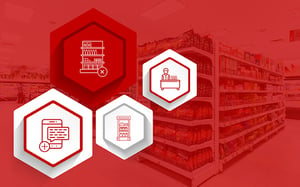Within every square inch of your store, there is an opportunity for you to make money and please your customers. Take your end caps, for example. Positioned at the end of aisles, you might take them for granted. However, you can achieve much with them. By approaching these displays with the right mindset, you can transform them into spaces that give you a healthy return on your investment.
After all, while you might overlook them, your customers most certainly won’t. That does, of course, lead to questions about how to best use your end caps.
If these displays are indeed valuable pieces of real estate, what can you do at a practical level to ensure they live up to expectations? Better yet; how do you set up a profitable end cap?
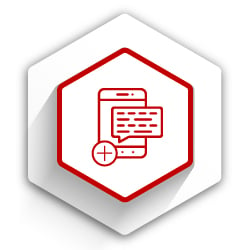
Add a technological element to your end caps
When it comes to creating effective retail displays, there is no doubt that it’s crucial you do enough with them to draw shoppers into your store. After all, your shoppers buy with their eyes first. If you can capture their attention, you’re well on your way to enticing them to buy from your store.
If you’re interested in creating such displays, we’ve written about the various ways to approach them in a separate article on this blog.
Of course, there is a caveat to creating displays that have a high visual impact. Here we’re talking about the static end cap displays that have become standard retail practice. Since they are so common, it can get to the point where shoppers don’t see them.
Similar to advertising, they could quite easily block it out or look right past it. That’s why it’s always a good idea to include something different. By different, we mean it’s worth adding a technological aspect, be that in the shape of a digital display or even a 3D element.
Before you argue that customers generally won’t look past these displays, hear us out. There are good reasons why it’s worth it doing something different.
Firstly, few displays can beat one that has movement involved.
For example, which of these two displays are more effective? Is it the one that has a stack of products with loud, garish advertising banners shouting at your customers? Or, is it the one that has a digital display and a small space where shoppers can stand out of the way of other customers?
We’re not going to argue against the fact that deciding on the best of the two does depend on what you want to achieve with your display. However, in most if not all cases, you’re more likely to see people standing around watching the screen than people lingering at a static display.
That brings us to our second reason: a higher engagement rate.
By including a technological element to your end caps, you can turn this space into an opportunity to engage with, educate and inform, and persuade your customers into buying a product. You could even include an interactive element to get them to get hands-on with the product to break down the sales barrier further.
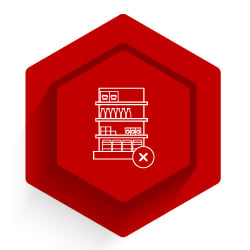
Keep your displays fully stocked at all times
From one angle, you could argue that you should be happy to see a partially empty end cap display in your store. That’s because it’s a visual measure of its success. An empty display means more money in your pocket.
However, there is a problem here. The issue is that its short-term thinking, which might help you turn a quick profit, but you’ll struggle long-term. In retail, it’s the long-term strategies that will determine who succeeds and who fails.
Also, as we mentioned in the opening paragraph of this article, it’s crucial to use your retail space to make money, yes, but also to please your customers. In this instance, a display without products does not please them at all.
There is also the point that by keeping your displays stocked at all times, you create every opportunity to entice customers to enter. That point becomes even more valid if shoppers can see your end cap displays (and shelves) from outside your store.
Let’s put you in the shoes of your average customer. As a customer, if you see an end cap that is either disorganised and messy, what would you think about the store? Let’s say you haven’t yet walked into the store and you’re standing outside.
Subconsciously, you may be thinking that if the display is messy, how does the rest of the store look? More importantly, why would you want to shop in a messy store. Surely it will only make for a frustrating experience and one that you’d rather avoid.
That speaks to a direct impact on your sales and profit. And not just for that display; across your entire store.
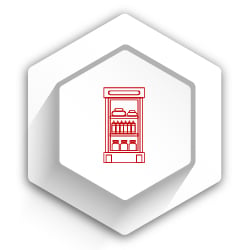
Use your end cap displays to cross-merchandise the correct products
There are plenty of techniques that you can use to increase the basket size of your customers and make more profit. The most obvious is to cross-merchandise complementary products from different categories together.
For example, placing a branded stand stocked full of spreads next to your shelf that holds your bread is a surefire way of guaranteeing additional sales. A rolling stand filled with charcoal or firestarter kits alongside your meat section works just as well.
Looking at the goal behind cross-merchandising, you can quite easily understand why it’s worth implementing this technique on an end cap display. In truth, there shouldn’t be any debate about whether or not to attempt it.
If you can couple it with a visually-impactful display that uses technology to pull customers in and get them to buy, you’re increasing your odds of making additional sales.
Of course, the products you display at the end of each aisle do need to make sense to your customer. This merchandising technique works best when you make the shopping experience better for your customers.
Thus, one of the last actions you’d want to take is to cross-merchandise a random product besides an unrelated category. What would shoppers think, for example, if you decided to cross-merchandised Dog Toys at the end of an aisle that stocks your Teas and Coffees? You’d only confuse them and come across as a store that doesn’t understand how to present products.
It’s also worth noting that if you do the above, you’d be guilty of squandering your end cap display space; thereby taking away an opportunity for another product that could provide you with much-needed sales and profit. Since you can often lease this space to suppliers, would you want to give them an area in your store that does little to nothing for their brand or products?
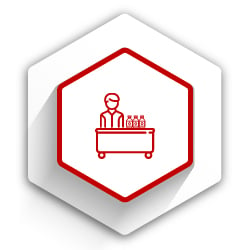
Don’t overcomplicate your end cap displays
While an end cap display offers you the perfect opportunity to encourage impulse buying and increase your sales, you do need to be careful about how you set it up and what products you place on it.
A product unrelated to those within the aisle is the one mistake that we have already mentioned. The other error is to overcomplicate this display by placing too many different products on it.
Ideally, when setting up the exhibit, you’d want to settle on one core message and then attempt to put that across to shoppers through your branding and presentation of a product.
By all means, ramp up the visual aspect of the display to draw in the eye of anyone nearby (or far away). Include promotion staff and technology to educate shoppers further if your product is too complicated to explain through a banner. Add an interactive element such as a touchscreen so shoppers can spend time getting to know the product.
However, you’d be doing your display, the products (and everyone involved) a disservice by trying to sell too much. At most, you could include a variety of that one product but nothing more than that.
Because by not sticking to one message, you could find yourself confusing your customers. That, in itself, can create a divide between the product you’re selling and your customers. And, what can end up happening is you find yourself sitting with a display full of items that you can’t move.
Conclusion
DotActiv’s planogram software is used by over 1500 retail professionals in more than 60 countries across the globe. Interested in finding out more about how we can enable you to use your business data to create better product layouts, localised assortments, advanced retail analytics and more?
You can visit our online store here.


